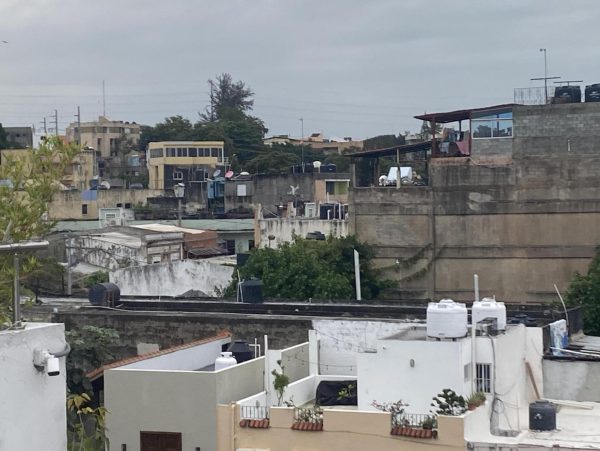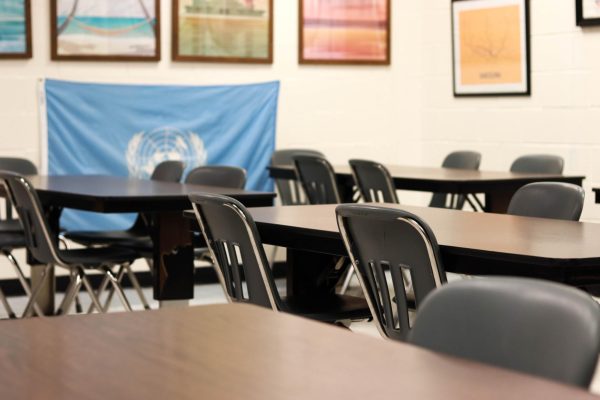College Board’s online AP exams: pitfalls and mild victories

“keyboard” by bonnyweb is licensed under CC BY-NC 2.0
Three months into the state-wide lockdown, students across the nation confronted the AP exam’s alter ego—a 45-minute test with one essay or two free-response questions. The test took a grand total of 80 minutes, including the 30-minute login period. While this may seem like a sigh of relief compared to the traditional 3-hour multiple choice and free response based test, it felt more like a sigh of disappointment and frustration for many.
As the wave of COVID-19 overtook the world, the entire learning experience turned digital, causing the AP exams to follow. At first, I took the notion of online testing in my stride because it kept the door of receiving college credit and showing my level of understanding to colleges open. But as the week of May 11 drew closer, I started to grow increasingly worried about things beyond my control. Worst-case scenarios such as the internet crashing, my computer undergoing an impromptu reboot and not being able to submit my answer were always tugging my mind away from my preparation. And unfortunately, those testing during the first week of AP exam administration could only sit helplessly as those fears manifested in reality.
The first exam administered was AP Physics C: Mechanics. 50,000 students took this test, and 2% of these students could not submit their exams. While this statistic may seem to exude an air of success on the College Board’s part, it is actually quite the opposite. In actuality, this statistic means that 1,000 students were not able to submit, and the College Board’s response to this tragedy was highly mediocre. According to a tweet that the College Board sent out on May 12, they claimed that outdated browsers were the culprit for unsuccessful submissions. This blatant deflection of blame onto the shoulders of students is unacceptable. Moreover, the statement does not ring true for many students who used updated browsers and were able to submit using the demo that the College Board sent out on May 4. For most, it was simply a spell of bad luck that was exacerbated by glitches in the server.
While the College Board came up with the reasonable idea to allow e-mail submission in a 10-minute window after the test officially ends for those who had trouble submitting, this safety net was not available for the students at the mercy of the highly experimental first-week testing period. Instead, those students will have to prolong their stress until the retest opportunity at the beginning of June. But if the initial submission failure was solely due to the College Board’s test infrastructure, how can one be sure that the exact same glitch won’t happen during the make-up test? Unless the College Board tells the public why the technical difficulties occurred and how they plan to fix it, there is no guarantee. Many rightfully exasperated students and parents want the College Board to accept the original answers with a timestamp, to prove that no changes were made to them in the interim. I believe this is the most practical and humane path for the College Board to follow, but with their current level of concern for students, I do not have high hopes.
If there are 2 things that I will give the College Board due credit for, it is the streamlined login information requirements and the 3 different submission options. The login requirements were quite minimal and much less tedious than the traditional test. The 3 different submission avenues also allowed for some flexibility and did help ease my stress level when I uploaded my handwritten responses for AP Chemistry and AP Psychology. However, the praise stops here.
Another major issue was that these online AP exams overlooked the wide digital divide that puts many at an unfair disadvantage, despite the fact that the College Board claims that one of its main missions is to minimize the inequities in its testing process. According to the Pew Research Center, about 35% of households that have a total annual income below $30,000 and have school-aged children, do not have high-speed internet. In contrast, only about 6% of households with a total annual income of $75,000 and above along with school-aged children are lacking high-speed internet. This irreconcilable gap cannot be solved by just giving free hotspots and laptops because this solution does not account for the disproportionate amount of stress that many lower-income families are facing during a pandemic that brought with it not only severe illness but also severe unemployment. I believe that a once-in-a-century pandemic is not the time for the College Board to roll out a strictly timed, synchronous, online exam, especially when many have to contend with the tragedy and hardship associated with these incomprehensible times.
Finally, I wish I could redirect the College Board’s attention to the massive elephant in the room: cheating. After my multiple visits to the College Board website, one glaringly vague tidbit kept jumping out at me. Their security guidelines consisted of a few cryptic sentences that talk about how the College Boards might insert themselves into social media and discussion threads in order to “confuse and deter” potential cheaters. This comment makes it seem as though the College Board went undercover and started manipulating students, which is a very convoluted way to fix an inevitable problem that comes along with unregulated online testing. Honestly, there is no adequate solution to the problem of cheating on these tests, so is the exam even worth it? With plagiarism software being the only hurdle that cheaters need to clear, the probability that cheating was rampant is a possibility that only the AP exam grading curve will reveal. At the end of an arduous year of college-level classes, if those that choose to cheat are the ones that ultimately reap the most reward, then the system is clearly clogged by a broken acorn.
Your donation will support the student journalists of Loudoun Valley High School. Your contribution will allow us to purchase equipment and cover our annual website hosting and publishing costs.











